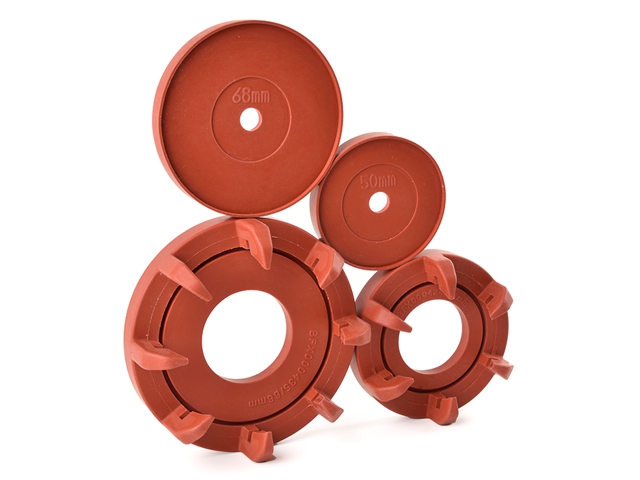The properties of Silicone components
Silicone seals are polymers made up of siloxane – a chain of alternating silicon and oxygen atoms frequently combined with carbon and/or hydrogen. They are often one- or two-part polymers, and may contain fillers to improve properties or reduce cost. In its natural state, silicone rubber is a highly-adhesive gel or liquid. Only when cured, vulcanised or catalysed does it convert to a solid. Trade names include Rhodosil and Elastosil.
Advantages of silicone mouldings, seals and gaskets
The outstanding characteristics of silicone parts include durability, flexibility, hygiene, and chemical resistance. They are generally non-reactive, stable and resistant to extreme environments and temperatures.

Disadvantages of silicone
However, there are some disadvantages to using silicone seals and gaskets including:
- Poor tear strength, although this can be improved with the addition of other ingredients (see below)
- As a premium material the cost can be higher compared with some other rubbers
- Application suitability should be carefull considered because of its lower strength and abrasion resistance
What are silicone components commonly used for?
There are multiple formulations of silicone rubbers including: food grade, steam resistant, metal detectable, high tear strength, extreme high and low temperature, electrically conductive, chemical/oil/acid/gas resistant, low smoke emitting and flame-retardant. Typical uses include:
- Aerospace in the form of o-rings, seals and gaskets in gas turbine, piston and jet engines.
- Food & dairy in machine parts and mouldings that come into contact with food and drink to prevent contamination.
- Instrumentation & Electronics due to its electrically insulative or conductive properties it is suitable for a wide range of applications.
- Medical devices and orthopaedic products due to its hygiene, durability and bio-compatibility.
- Motorsport & Specialist Automotive seals & gaskets.
- Subsea, Oil & Gas connectors repelling water and with great thermal stability.
Silicone properties
Why choose custom silicone seals, gaskets or mouldings?
DP Seals manufacture custom parts only. If you are currently using standard parts, but have some level of dissatisfaction with results, read our article with nine great reasons to choose custom over standard solutions.
- Seals
- Gaskets
- Mouldings
- Micro moulding
- Silicone to rubber bonding
- Silicone to metal bonding
Silicone materials expertise
At DP Seals we pride ourselves on being able to provide specialist advice in selecting and developing exactly the right blend of materials to meet a vast range of performance requirements.
As part of our service we also maintain a large quantity and variety of quality raw materials in stock, enabling us to offer fast turnaround and provide for tight deadlines.
The information provided here is only a guide to silicone’s primary characteristics and uses. The relationship between material, product performance and blend options is complex.
Below you’ll find many free resources to help you think about material selection and we are always on hand to discuss your requirements and provide expert advice.
Our most commonly used silicone materials
Handy Product Development Resources
- Design engineers checklist
- Chemical Compatibility Database
- Rubber Compounds
- Videos with Top Tips
- Guide to developing Custom Rubber Seals, Gaskets & Mouldings
- Rubber To Metal Bonding Guide
Customer testimonials
As someone who has been assessing suppliers for over 20 years it was quite apparent to me that DP Seals are technical experts and industry specialists. In meeting our 4M and QCDES standards it was their personal touch and attention to detail that helped set them apart.
Natasha Witcombe, Technical Procurement Engineer, Ricoh
Read more customer testimonials
Find out more
- To discuss your requirements speak to our Material Technologists on +44 (0)1202 674671